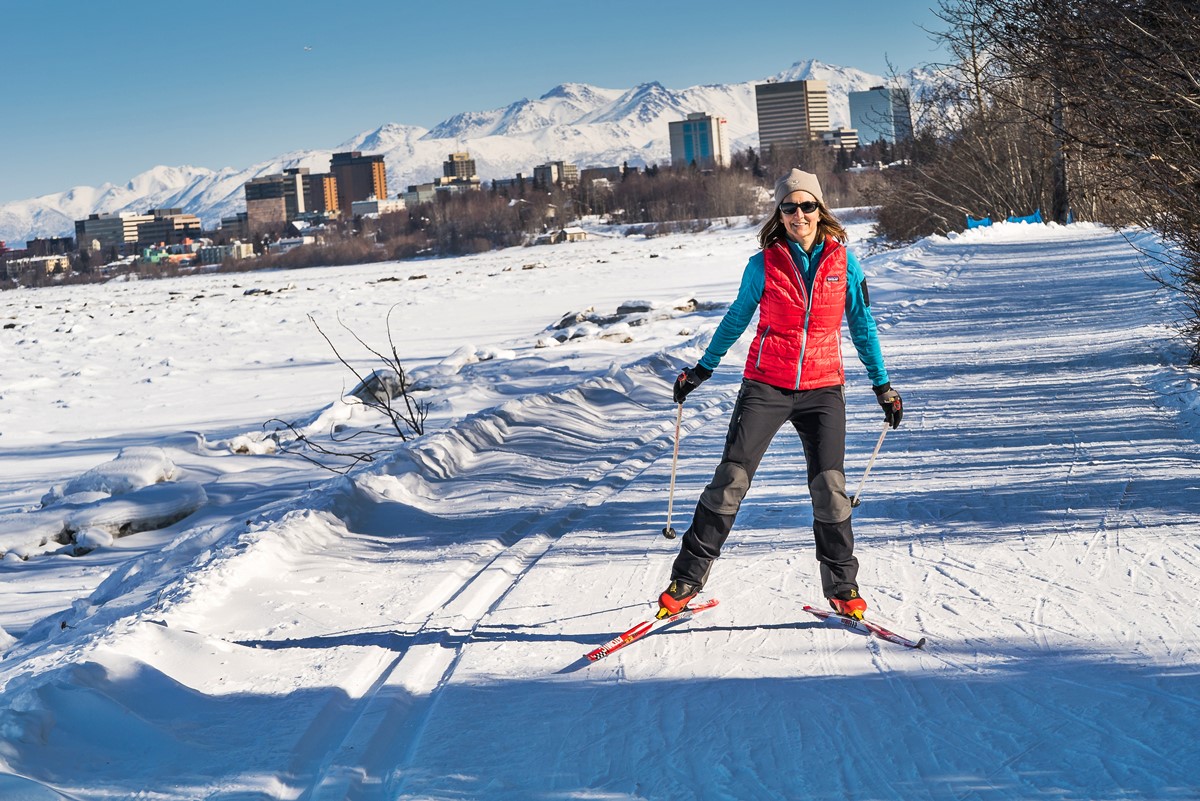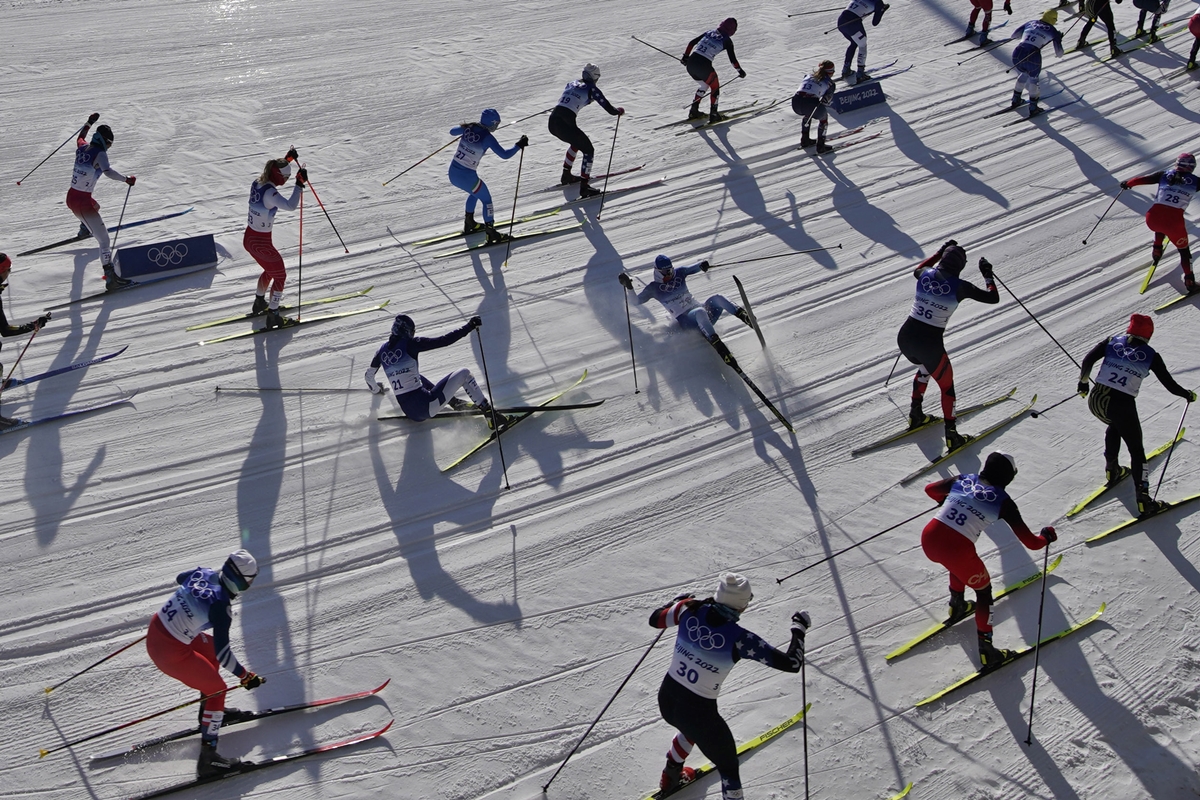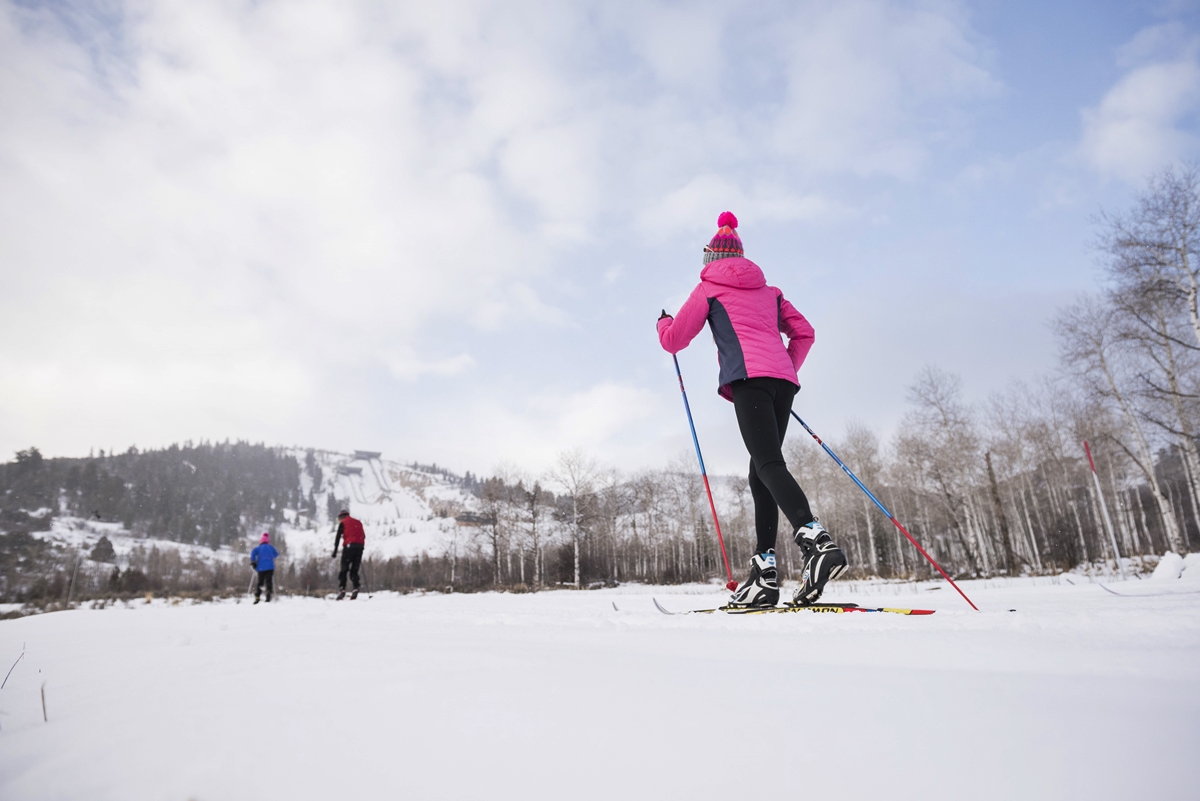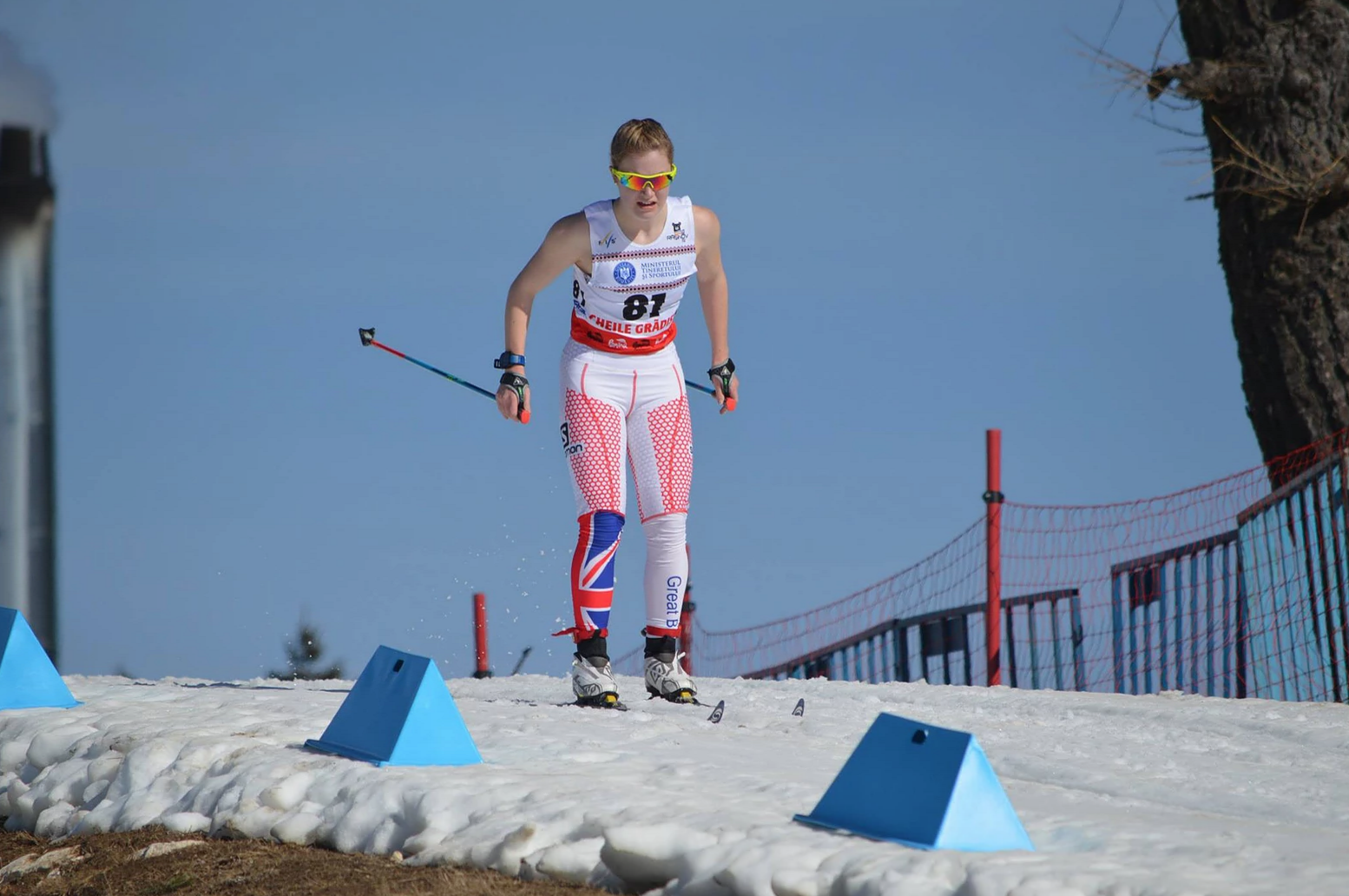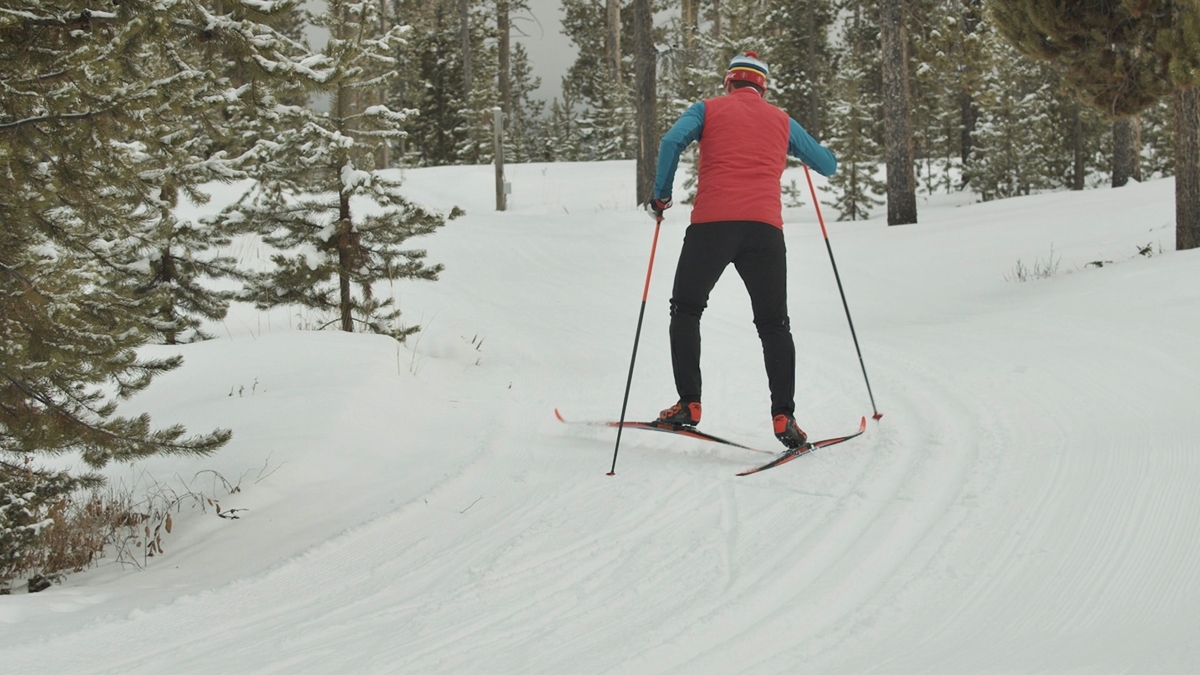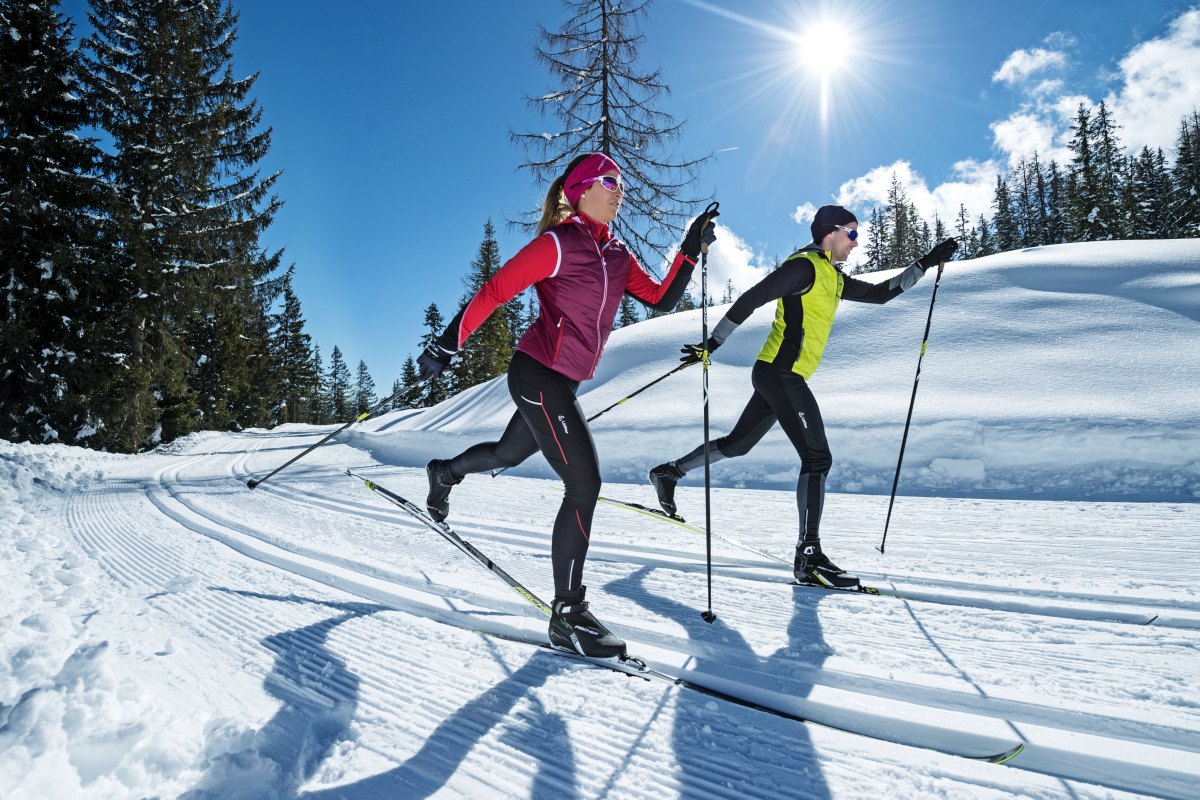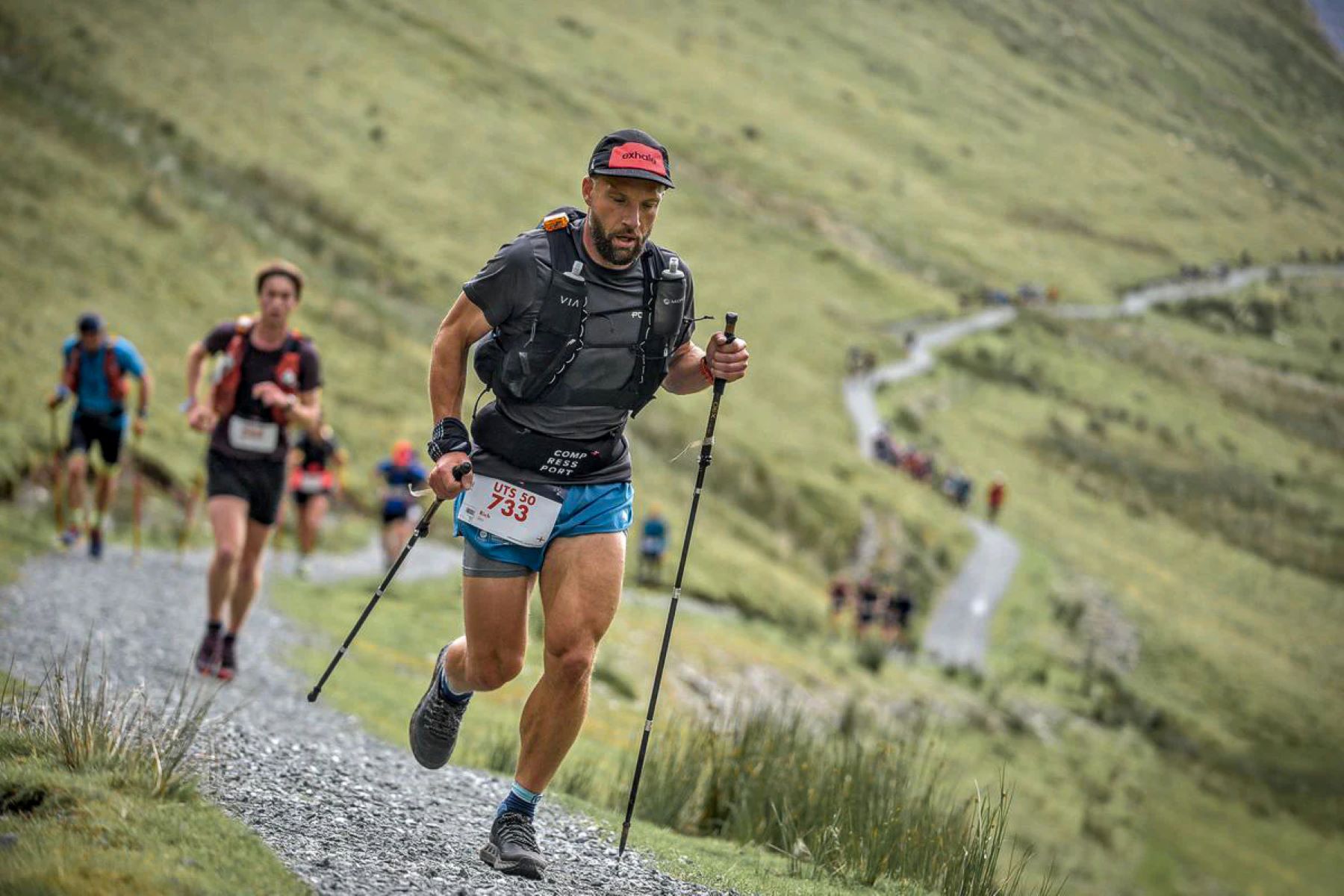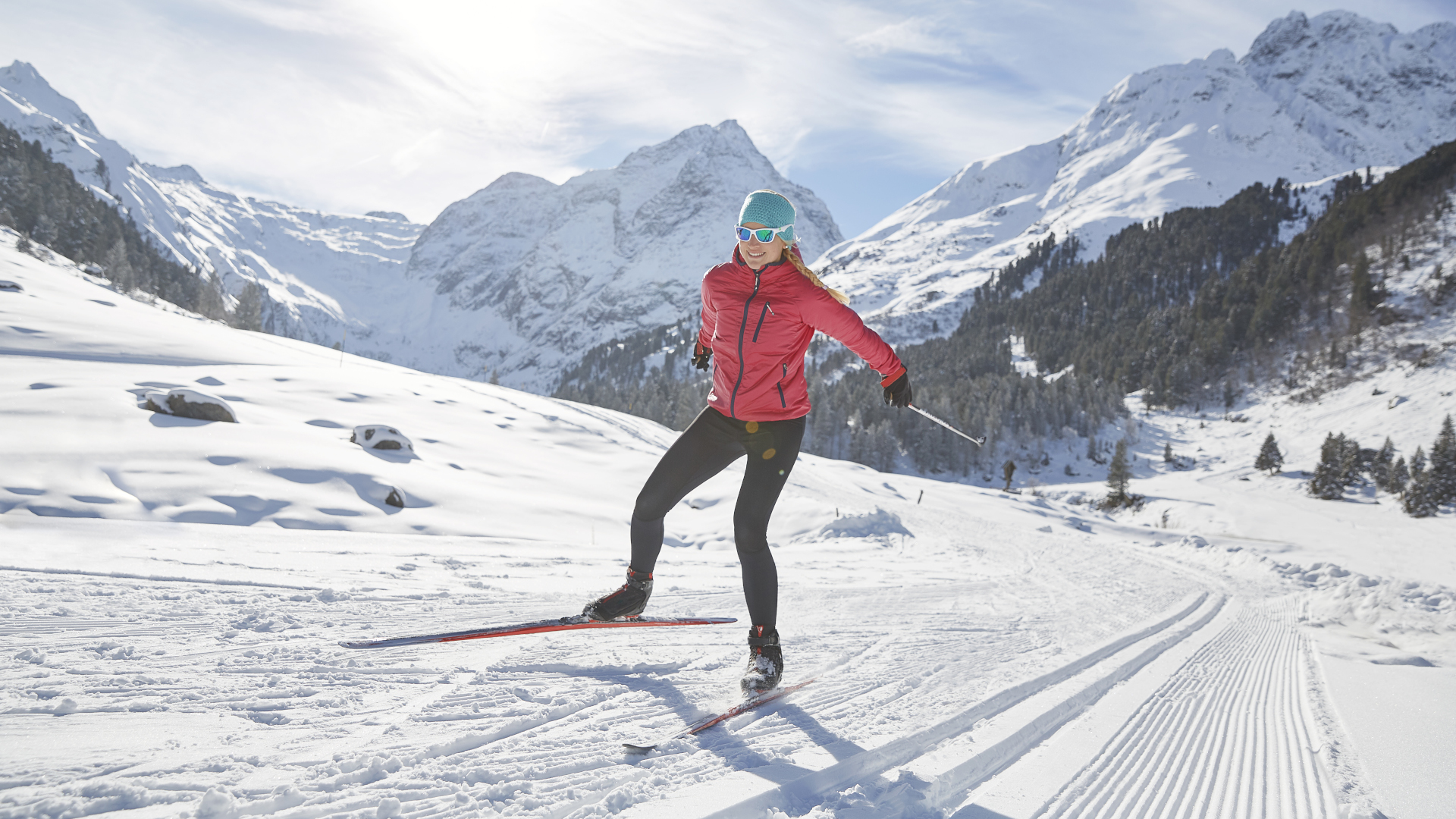

Featured
How To Go Uphill Cross Country Skiing
Modified: August 22, 2023
Learn how to master the art of uphill cross country skiing with our featured guide, providing expert tips and techniques to conquer any slope.
Introduction
Uphill cross country skiing is an exhilarating and challenging winter sport that combines the endurance and technique of cross country skiing with the added difficulty of tackling steep ascents. It is popular among outdoor enthusiasts and athletes who seek a full-body workout while enjoying the beauty of snowy landscapes.
Unlike traditional flat cross country skiing, uphill cross country skiing requires additional physical strength and stamina to conquer the uphill sections. It engages the muscles in the legs, core, and upper body, providing an intense cardiovascular workout that can improve overall fitness and endurance.
While uphill cross country skiing may seem daunting at first, it offers numerous benefits both physically and mentally. Not only does it enhance cardiovascular health and muscular strength, it also provides an opportunity to connect with nature and escape from the hustle and bustle of daily life.
In this article, we will delve into the world of uphill cross country skiing, exploring the benefits, getting started, equipment needed, choosing the right terrain, proper technique, and safety measures. Whether you are a beginner or an experienced skier looking to challenge yourself, this guide will provide you with the knowledge and tips to have a successful and enjoyable uphill cross country skiing experience.
Benefits of Uphill Cross Country Skiing
Uphill cross country skiing offers a wide range of benefits for both your physical and mental well-being. Here are some of the key advantages of engaging in this challenging winter sport:
- Full-body workout: Uphill cross country skiing engages multiple muscle groups, providing a complete workout for your legs, core, and upper body. The uphill climbs require more effort, activating your glutes, hamstrings, and quadriceps, while the poles engage your shoulders, arms, and upper back muscles.
- Cardiovascular fitness: The uphill sections in cross country skiing require increased exertion, leading to an elevated heart rate. This cardiovascular workout improves lung capacity, strengthens your heart, and boosts overall endurance.
- Calorie burning: Uphill cross country skiing is a high-intensity activity that burns a significant amount of calories. The constant movement and uphill effort can help you shed excess weight and maintain a healthy body composition.
- Low-impact exercise: Cross country skiing places minimal stress on your joints, making it an ideal sport for individuals with joint pain or those recovering from injuries. The gliding motion provides a smooth and natural movement that reduces the impact on your knees, hips, and ankles.
- Mental well-being: Spending time in nature and embracing the peacefulness of snowy landscapes can have a positive impact on your mental health. Uphill cross country skiing allows you to escape the hustle and bustle of daily life, reduce stress levels, and improve your overall mood.
- Improved balance and coordination: Negotiating steep uphill climbs requires focus, balance, and coordination. As you navigate through challenging terrains, you will enhance your ability to maintain stability and improve your overall balance and coordination skills.
- Enhanced muscular endurance: Uphill cross country skiing demands endurance from your muscles as they work continuously to propel you uphill. Over time, this will lead to improved muscular endurance, allowing you to ski for longer distances with less fatigue.
- Social interaction: Uphill cross country skiing can be enjoyed with friends, family, or in a group setting. It provides an opportunity to connect with others who share the same passion for outdoor activities and create lasting memories together.
With these incredible benefits, it’s no wonder uphill cross country skiing is gaining popularity among winter sports enthusiasts. Not only does it offer a great physical challenge, but it also allows you to immerse yourself in the beauty of nature and reap the rewards in terms of fitness and mental well-being.
Getting Started with Uphill Cross Country Skiing
If you’re new to uphill cross country skiing, it’s essential to start with the right foundation and gradually build your skills and strength. Here are some steps to get you started on your uphill cross country skiing journey:
- Take a lesson: It’s highly recommended to take a lesson from a certified cross country skiing instructor, especially if you’re a beginner. They can teach you the proper techniques, help you understand the equipment, and provide valuable tips to improve your skiing abilities.
- Choose suitable terrain: Begin with gentle and gradual inclines to familiarize yourself with uphill sections. Avoid steep and challenging slopes until you have developed the necessary skills and strength.
- Get the right equipment: Invest in a pair of uphill cross country skis, which are lighter and narrower than traditional skis. They provide better grip and maneuverability on uphill sections. Don’t forget to get appropriate boots, poles, bindings, and clothing suitable for the snowy conditions.
- Warm-up and stretch: Before hitting the trails, it’s essential to warm up your muscles and perform stretching exercises to prevent injuries. Focus on stretching your legs, hips, glutes, and upper body.
- Start with shorter sessions: Begin with shorter skiing sessions to gradually build your endurance and allow your muscles to adapt to the demands of uphill skiing. As you gain strength and confidence, you can increase the duration and intensity of your workouts.
- Practice proper technique: Uphill cross country skiing requires a specific technique to maintain balance and efficiency. Keep your weight slightly forward, engage your core muscles, and use the poles to propel yourself uphill. Practice the diagonal stride and herringbone technique to effectively ascend steep slopes.
- Stay hydrated and fuel properly: It’s crucial to stay hydrated during your skiing sessions, even in cold weather. Carry water or sports drinks and consume small snacks to maintain energy levels.
- Don’t forget safety: Always be aware of your surroundings and follow safety guidelines. Ski in designated areas, inform someone about your skiing plans, and carry a map, compass, and safety equipment like a whistle and a first aid kit.
By following these steps, you can lay the groundwork for a successful uphill cross country skiing experience. Remember, practice makes perfect, so take your time to develop your skills and gradually challenge yourself with more demanding terrain as you progress.
Equipment Needed for Uphill Cross Country Skiing
Uphill cross country skiing requires specific equipment designed to help you navigate the challenging terrain and uphill sections effectively. Here are the key pieces of equipment you’ll need to get started:
- Skis: Look for uphill cross country skis that are lighter and narrower than traditional skis. These skis offer better grip and maneuverability on uphill terrain. They often have scales or skins on the base to provide traction on slopes. Consider consulting with a professional at a ski shop to ensure you choose the right skis for your skill level and fitness.
- Boots: Uphill cross country ski boots should provide proper ankle support and flexibility. Look for boots that are compatible with your chosen ski bindings. Ensure a snug and comfortable fit to maintain control and stability while skiing uphill.
- Poles: Poles are crucial for propulsion and balance during uphill cross country skiing. Choose poles that are the appropriate length for your height and skiing style. Adjustable poles are beneficial as you can customize the length for different terrains and techniques.
- Bindings: The bindings connect your boots to the skis. Look for bindings that are compatible with your chosen boots and allow for easy maneuvering. Consider bindings that have a wider toe plate for better stability and control during uphill climbs.
- Clothing and Accessories: Dress in layers to regulate your body temperature. Use moisture-wicking base layers, insulating mid-layers, and waterproof outer layers to protect against the cold and wet conditions. Don’t forget to wear a hat, gloves, and sunglasses to protect your head, hands, and eyes from the elements.
- Safety Equipment: Always prioritize safety while uphill cross country skiing. Carry a map and compass to navigate the trails, a whistle to attract attention in case of emergencies, and a first aid kit for any minor injuries. It’s also wise to pack extra food, water, and a spare set of warm clothing.
- Optional Accessories: Depending on the terrain and weather conditions, you may want to consider additional accessories such as gaiters to keep snow out of your boots, a ski pack to carry your essentials, and ski skins for added traction on steeper slopes.
Remember, choosing the right equipment is crucial for your safety and enjoyment during uphill cross country skiing. It’s recommended to consult with knowledgeable staff at a ski shop to ensure the best fit and performance for your specific needs.
Choosing the Right Terrain for Uphill Cross Country Skiing
Choosing the right terrain is essential for a safe and enjoyable uphill cross country skiing experience. Here are some factors to consider when selecting the terrain:
- Gradient: Start with gentle slopes, especially if you’re a beginner. Gradually increase the slope steepness as your skills and fitness improve. Avoid overly steep slopes until you have gained the necessary experience and confidence.
- Trail Difficulty: Consult trail maps or speak with local experts to determine the difficulty level of cross country skiing trails. Look for designated uphill sections or trails with varying levels of difficulty to challenge yourself appropriately.
- Snow Conditions: Be mindful of the snow conditions on the chosen terrain. Freshly groomed trails with packed snow provide better traction and control. Avoid icy or hard-packed conditions that can make uphill skiing challenging.
- Trail Availability: Check if the trails are open and maintained for uphill skiing. Some cross country ski locations may have specific uphill skiing trails or allow uphill skiing on certain days or times.
- Terrain Features: Take note of any obstacles or hazards on the chosen terrain, such as trees, rocks, or cliffs. Steer clear of areas with potential avalanche risk or unstable snow conditions.
- Weather Conditions: Consider the weather conditions, including temperature, wind speed, and visibility. Cold or windy conditions can make uphill skiing more challenging, so dress appropriately and keep an eye on changing weather patterns.
- Scenic Beauty: Uphill cross country skiing allows you to immerse yourself in the beauty of nature. Choose terrains that offer stunning views, picturesque landscapes, or opportunities to observe wildlife.
- Trail Etiquette: Respect other skiers on the trails and follow established trail etiquette. Yield to faster skiers, stay on marked trails, and be aware of the specific rules or guidelines of the cross country ski area you are visiting.
Remember, each terrain offers its own unique challenges and rewards. It’s important to evaluate your skill level, fitness, and comfort in different terrain types to choose an appropriate and enjoyable experience. Consider starting with milder terrains and gradually progress to more challenging slopes as you gain confidence and experience.
Proper Technique for Uphill Cross Country Skiing
Mastering the proper technique is crucial for efficient and effective uphill cross country skiing. Here are some key techniques to keep in mind:
- Weight Distribution: Maintain a slight forward lean and distribute your weight evenly on both skis. This helps with balance and grip on the uphill climbs.
- Diagonal Stride: The diagonal stride is a fundamental technique in cross country skiing. Push off with one ski while gliding forward with the other, using your poles to help propel yourself uphill. Focus on a fluid motion and coordinated arm and leg movement.
- Herringbone Technique: When tackling steeper slopes, use the herringbone technique. Angle your skis outward, forming a V shape, and apply pressure on the inner edges. Dig your edges into the snow to gain traction and push yourself uphill.
- Pole Usage: Utilize your poles to aid in propulsion and balance. As you push off with one ski, plant your pole beside the opposite foot and use it to push yourself forward and upward. Maintain a rhythmic motion with your pole plant and arm swing.
- Body Position: Keep your upper body relaxed and face forward. Engage your core muscles to maintain stability and control. Avoid excessive leaning or reaching with your upper body, as it can throw off your balance.
- Breathing: Breathe deeply and rhythmically to ensure a steady flow of oxygen to your muscles. Exhale fully to expel carbon dioxide and inhale deeply to replenish oxygen during the uphill efforts.
- Stride Length: Adjust your stride length depending on the incline. Shorten your stride on steeper slopes to maintain better control and prevent overexertion. Lengthen your stride on gentler inclines to maximize glide and conserving energy.
- Smooth Transitions: Practice smooth transitions between techniques and terrains. Be prepared to switch between diagonal stride and herringbone technique based on the terrain and slope you encounter.
- Practice and Pacing: Take the time to practice and familiarize yourself with the techniques before attempting more challenging uphill sections. Pace yourself and find a rhythm that allows you to maintain a steady and sustainable effort.
Remember, mastering these techniques takes time and practice. Start with gradual slopes and focus on your form and technique. As you gain experience and confidence, you can tackle more challenging terrains and refine your skills to become a proficient uphill cross country skier.
Tips for Uphill Cross Country Skiing
Here are some helpful tips to improve your uphill cross country skiing experience:
- Warm-up and Stretch: Start with a proper warm-up routine to prepare your muscles for the exertion. Perform dynamic stretches that target your lower body and upper body muscles.
- Maintain a Steady Pace: Find a comfortable and sustainable pace that allows you to maintain a consistent effort. Avoid starting too fast to prevent early fatigue.
- Stay Hydrated and Eat Well: Hydrate before, during, and after your skiing sessions to maintain optimal performance. Carry a water bottle and consume snacks that provide sustained energy.
- Focus on Breathing: Pay attention to your breathing and take deep, controlled breaths to provide ample oxygen to your muscles. Exhale fully to expel carbon dioxide and inhale deeply to replenish oxygen.
- Use Proper Gear Maintenance: Keep your cross country skis and boots in good condition by regularly waxing the skis, cleaning the bindings, and checking for any wear or damage. Well-maintained gear will ensure optimal performance.
- Pick the Right Wax: Apply the appropriate wax on your skis based on the snow conditions. Different waxes provide better glide and traction on various types of snow surfaces.
- Learn from Others: Observe experienced uphill cross country skiers or take lessons to learn new techniques, refine your skills, and improve your overall performance.
- Pay Attention to Technique: Focus on maintaining proper technique, including body position, weight distribution, and pole usage. This will help optimize your efficiency and conserve energy.
- Rest and Recover: Listen to your body and take breaks when needed. Allow time for rest and recovery between skiing sessions to avoid overexertion and reduce the risk of injury.
- Enjoy the Scenery: Take moments to appreciate your surroundings and the beauty of nature while uphill cross country skiing. Immerse yourself in the experience and enjoy the tranquility.
Uphill cross country skiing is a physically demanding sport, but with the right techniques, gear, and mindset, you can conquer the slopes and improve your skills over time. Remember to have fun, stay safe, and embrace the challenges that uphill skiing brings.
Safety Measures for Uphill Cross Country Skiing
Uphill cross country skiing can be an exhilarating and rewarding activity, but it’s important to prioritize safety to ensure a positive and safe experience. Here are some essential safety measures to consider:
- Stay within your skill level: Choose terrain and trails that match your skill level and experience. Avoid venturing into areas that are beyond your abilities.
- Be aware of weather conditions: Check the weather forecast before heading out and understand how it may impact trail conditions. Dress appropriately for the weather and be prepared for sudden changes.
- Inform someone of your plans: Before you start your uphill skiing adventure, let someone know about your plans. Share details such as the trail you’ll be skiing, estimated duration, and expected time of return.
- Carry essential safety equipment: Always carry a map, compass, and a whistle for navigation and signaling. It’s also wise to have a first aid kit, headlamp, and a spare set of warm clothing in case of emergencies or unexpected delays.
- Stay on designated trails: Ski on marked trails and respect any closures or restrictions. Venturing off-trail can be dangerous, especially in areas prone to avalanches or other hazards.
- Monitor avalanche conditions: If uphill skiing in mountainous regions, check the avalanche forecast and be aware of the current conditions. Avoid areas with a high risk of avalanches, and always ski with a partner.
- Bring sufficient supplies: Carry enough water, snacks, and energy-rich food to sustain yourself during the skiing session. Stay hydrated and fuel your body to maintain energy levels.
- Learn and practice self-rescue techniques: Familiarize yourself with basic self-rescue techniques like removing skis on a steep slope or using your poles for extra stability. Being prepared for unexpected situations can make a significant difference.
- Respect wildlife and the environment: Uphill skiing often takes place in natural settings. Be respectful of wildlife and their habitats, and follow any conservation regulations that may be in place.
- Slow down near congested areas: Reduce your speed when approaching crowded areas or crossing paths with other skiers, snowshoers, or hikers. Exercise caution and maintain control to avoid collisions.
- Practice proper etiquette: Use proper trail etiquette by yielding to faster skiers, keeping to the right side of the trail, and communicating effectively with others on the trail.
By following these safety measures, you can minimize the risks associated with uphill cross country skiing and have a safe and enjoyable time on the slopes. Always prioritize your safety and be prepared for any unexpected circumstances that may arise.
Conclusion
Uphill cross country skiing offers a thrilling and adventurous way to embrace the winter season while enjoying the beauty of nature. It provides numerous physical and mental benefits, including a full-body workout, cardiovascular fitness, calorie burning, and improved balance and coordination. Uphill cross country skiing is not without its challenges, but with the right equipment, proper technique, and safety measures in place, anyone can participate and have a rewarding experience.
Getting started with uphill cross country skiing requires the right foundation, including taking lessons to learn proper techniques and choosing suitable terrain that matches your skill level. Investing in the appropriate equipment, such as uphill cross country skis, boots, and poles, is essential for optimal performance. Gradually challenging yourself with steeper terrains and practicing the proper technique, like the diagonal stride and herringbone technique, will help improve your skills and endurance.
As with any outdoor activity, safety should always be a priority. Be aware of weather conditions, inform someone of your plans, and carry essential safety equipment. Always ski on designated trails, respect trail closures, and stay within your skill level. Additionally, practice proper trail etiquette and respect the environment and wildlife.
Ultimately, uphill cross country skiing is not just about the physical aspects but also about immersing yourself in the beauty of nature, enjoying the peacefulness of snowy landscapes, and connecting with others who share the same passion. So, grab your gear, embrace the challenges, and embark on the exhilarating journey of uphill cross country skiing.
